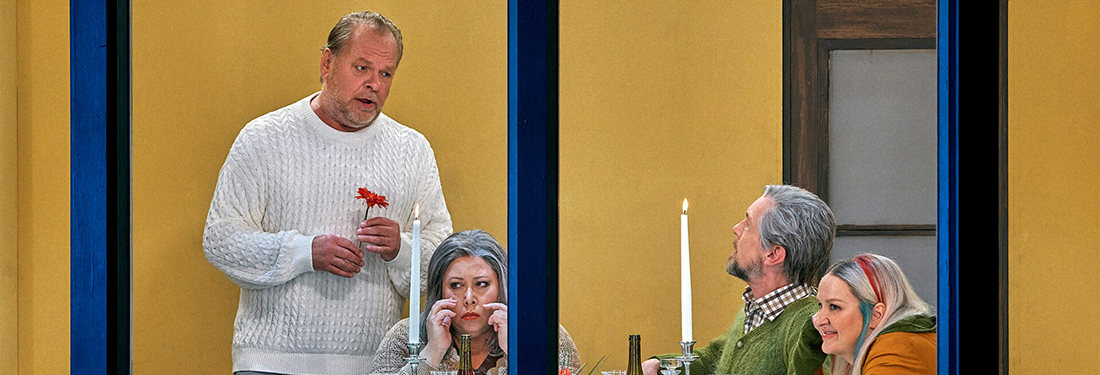
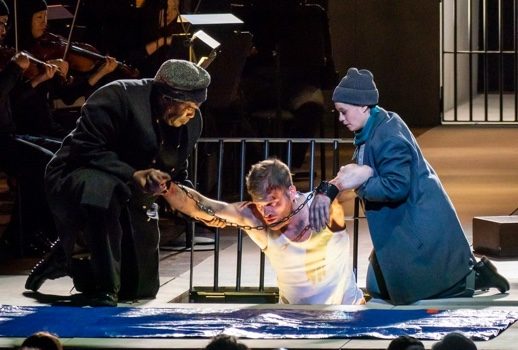
The turn of the millennium has seen a renewed concern for the social harm wrought by the prison system, in particular the negative effects of mass incarceration on black, indigenous, and queer communities. Yet, for all this increased awareness, our incarceration problem remains, for the most part, out of sight and out of mind, our prison populations silenced, disenfranchised, and isolated from the rest of society.
David Lang’s Prisoner of the State, which was premiered on Thursday night by the New York Philharmonic, places the issue of mass incarceration front and center, foregrounding the violence of the prison system, both physical and psychological. The centerpiece of the Philharmonic’s “Music of Conscience” series, Lang’s opera forms part of the orchestra’s laudable attempt to reinvent itself as an incisive political voice within the New York arts scene.
And Prisoner of the Statecertainly wore its politics on its sleeve, a staunch rallying cry against the injustices of incarceration and an operatic manifesto for the increased visibility of the incarcerated within our contemporary political consciousness. The opera’s final lines (addressed directly to the audience as plea, provocation, and accusation) neatly summed up the work’s central credo: “We need your light [….] You need to see us [….] If you can see us, we can be free.”
Prisoner of the State was billed as a modern retelling of Beethoven’s Fidelio, yet this label did not do justice to the relevance, immediacy, and modernity of Lang’s work and its political ethos. It has been over 200 years since Fidelio premiered (in its third-and-final version) at Vienna’s Theater am Kärntnertor, and Lang’s opera revealed both the continued relevance of Beethoven’s work and the extent to which it has dated.
Fidelio’s libretto, based on Jean-Nicolas Bouilly’s Revolutionary-era French text, is, in many ways, a timeless indictment of the abuse of state power at the hands of corrupt political forces. Written during a period of division, upheaval, and violence, Fidelio holds many burning messages for our own political moment, and Prisoner of the State certainly brought these to the fore. Lang’s work demonstrated that Fidelio, at its heart, concerns the helplessness of the powerless and the inevitable corruption of the powerful; the Stanford Prison Experiment avant la lettre.
However, Prisoner of the State diverged considerably from Beethoven’s opera, notably in relation to the slippery notion of “freedom”. As one of the few so-called “rescue operas” that have survived in the contemporary performing canon, Fideliopresents the idea of freedom with a hefty dose of Enlightenment optimism: in the end, the morally-superior individual triumphs over the forces of evil and achieves emancipation.
There is considerable musicological debate about the legitimacy of the term “rescue opera”: many scholars have argued that “rescue opera” is not a genre in and of itself, but rather just another instantiation of the deus-ex-machinastorylinepopular in almost all classical opera.
Prisoner of the State blatantly eschewed Fidelio’s lieto fine, and, in doing so, evinced the historicity of the “rescue opera” plotline, showing the extent to which Beethoven’s opera is rooted in now-antiquated intellectual and artistic traditions.
Lang’s opera instead suggested that, in a world built on injustice, no one can truly be free; to quote from the libretto: “In a better world, you could be saved [….] In a better world, we would all be free.” Lang’s conception of “freedom”, with its hints of existential nihilism, unveiled a modern-day disillusionment with the Enlightenment project and its cheery promises of individual liberty.
For all that Prisoner of the State seemed to problematize the intellectual foundations of Beethoven’s opera, there was much of Fidelio’s text in Lang’s libretto, which was often a (very) loose translation of the original (For example: “O welche Lust in freier Luft den Athem einzuheben! Nur hier ist Leben. Der Kerker eine Gruft.” became “O what desire to breathe the air again. Our life is in the air. Here we are in the grave.”)
However, there was little reference to Beethoven’s music in Lang’s score, which had more in common with blockbuster film scoring and post-minimalism than early romanticism.
Lang’s opera had three prevailing musical styles. The first, and, indeed, the most arresting, involved punchy, fortissimo, brass and woodwind chords in hammering, percussive rhythms, over which the singers barked in pithy, recitative-like aphorisms. Lang frequently transposed these gutsy chord progressions up a third mid-scene, instigating a John Williams-like hike in musical tension.
The second style, reserved exclusively for the chorus of prisoners, was a strident a capella chorale with seemingly inextinguishable rhythmic energy, recalling, perhaps, Beethoven’s own bracing male choruses in Fidelio. These choruses were vibrantly sung by the men of the Concert Chorale of New York, who, along with the orchestra, remained onstage throughout the opera, a constant reminder of the innumerable victims of mass incarceration.
Lang’s third style was much more subdued, with icy, transparent string accompaniments (usually confined to a single diatonic space) paired with a more lyrical vocal style. These moments, with their cool, repeated ostinati, had a kind of baroque detachment, and provided respite from the breakneck pace of this short one-act opera (the entire work was just over an hour in length).
A sense of detachment seemed to pervade Lang’s opera. Structurally, Prisoner of the State resembled The Death of Klinghoffer, with its oratorio-like alternation of choruses and arias and relative consistency of affect. However, Prisoner of the State also had a distinctly Brechtian quality – not the tuneful, jazzy, humorous Brecht of the Weill collaborations, but the harsh, frigid, dogmatic Brecht in partnership with Eisler.
The singers frequently broke the fourth wall, speaking out of character; political messages were declaimed bluntly and acerbically; and the libretto was dogged by meat-and-potatoes dialectical materialism (“In this world, without gold, you can’t live”), recalling Brecht’s more abrasive agitprop.
There were also moments of Ionesco-esque absurdism: the Assistant (Lang’s version of Leonore) shoots the Governor (Lang’s Don Pizarro) in the chest, but it does not seem to hurt him at all; at the same time, a mysterious inspectorate, ostensibly on their way to save the Prisoner (Lang’s Florestan), never arrive, even after a trumpet fanfare announces their imminent approach, leaving the opera to end in a chilling dramatic hiatus.
Director Elkhanah Pulitzer made the most of the opera’s dramatic severity with a staging that was equal parts exhilarating and discomforting. Particularly effective was her choreography of the chorus, who, jumpsuit-ed and huddled on a precarious ledge above the stage, often clambered over each other, or up the concrete walls.
Under Pulitzer’s direction, the chorus were endowed with a sense of humanity despite the dehumanizing conditions of their imprisonment, and their scenes were some of the most moving in the opera.
In Matt Saunders’ imposing set design, the stage of David Geffen Hall was enclosed in chain-linked fencing and barbed wire, and lit with harsh, fluorescent flood-lighting. Tessellated projections of the chorus, projected live from the security cameras lining the cage, flashed across the prison walls, compounding the feeling of crowdedness, surveillance, and claustrophobia.
The orchestra sat within this cage, dressed in nondescript black clothing, as if they were a part of the prison’s architecture, and, indeed, in the opera’s more towering passages, the onstage musicians evoked the gray, monolithic structures of the modern-day megaprison.
On the podium, Jaap van Zweden lent plenty of personality to Lang’s score, adding a touch of zest to the opera’s blander moments. Zweden matched Lang’s accomplished choral writing with ample drive and force to propel the extended unaccompanied passages.
Of the singers, Eric Owens, as the Jailer,was the unequivocal star of the show. After a rather tentative turn as Hagen in the Met’s Ring, Owens was in full force here, wielding his rich, stentorian bass to enliven Lang’s sucker-punch recitative. Owens was a commanding onstage presence despite his character’s general meekness, transforming the Jailer’s work-a-day obeisance into an electrifying cynicism.
In the role of the Governor, Alan Oke was also deeply compelling. He brought a bright, clear sound to the opera’s villain, with impeccable diction and a Peter Pears snarl. His aria, “Better to be feared” (a kind of knock-off “Ha più forte”) was endowed with plenty of musical slime, one of the opera’s more skin-crawling moments.
Julie Mathevet was underwhelming as the Assistant, her singing timid and uneven with a thin middle register and wooly diction. Mathevet’s sound suffered the most from the opera’s amplification, often drowned out in the mix by the upper strings where the other singers were perfectly audible. The use of microphones did allow Mathevet to employ colorful vocal techniques more at home in musical theater than in opera, including a very satisfying chest-voice belt.
Jarrett Ott lent warmth and restraint to the role of the Prisoner despite spending most of the opera singing, Jochanaan-style, from a hole in the ground. If Ott did not stand out, it was not due to his performance, but to his seriously underwritten role. Indeed, the entire wife-rescues-husband plotline, despite being at the heart of the Fidelio story, felt somewhat extraneous in Lang’s opera.
It did not help that Lang gave the Prisoner and the Assistant some of his most drab, pedestrian music; nor did it help that their arias were packed full of cringeworthy clichés (e.g.. “I see my wife, I see an angel, sometimes I feel her here beside me”).
The extraneousness of this central plotline was tied up in one of the central problems with Lang’s work. Prisoner of the State seemed to be a very noble attempt to move away from the dubious idea, espoused in Fidelio, that individual heroism and moral fiber is enough rescue victims of unjust imprisonment.
Lang appeared to advocate, instead, for public responsibility and collective action on the problem of mass incarceration, throwing the onus on society as a whole to ensure the welfare of prisoners, regardless of their identity or their crimes.
Where Fidelio is about one woman’s bravery and one man’s suffering, Prisoner of the State is about the social harm of incarceration more generally and our communal culpability in perpetuating this harm. Thus, it felt like the central relationship of Lang’s opera was not between one prisoner and his wife, but between the unindividuated chorus of prisoners and the audience, the tacit, unyielding observers of the onstage horrors.
With the focus so clearly on the communal and not on the individual, the Assistant’s futile attempts to rescue her husband seem dramatically weak in comparison to the choruses which addressed the audience directly in bold, inculpatory maxims. Thus, the question remains: why keep the rescue plot at all? The opera would work just as well as a plotless statement against mass incarceration, and would, perhaps, be stronger without the undercooked love story.
Or, if the opera were to focus on the plight of individual prisoners, why not probe the intersections between incarceration and identity, showcasing diverse voices affected by the warped justice system. Lang’s tendency toward a generalized, universalized timelessness was already undercut by the decidedly archaic gender politics of the wife-dressed-as-boy ruse. (In what modern prison would that even work?)
In other words, it seemed as if Lang missed a number of political and aesthetic opportunities in pursuit of the Fidelio plotline, one that Lang himself seems to find problematic. The ultimate effect was of a work torn between rewriting an old opera and forging a new one.
Yet, for all its paradoxes, Prisoner of the State was a powerful, ballsy call for social justice and an affecting night at the opera. Lang has created a profound, brooding work that stands much better on its own than it does in relation to the opera that inspired it.
Photo: Chris Lee














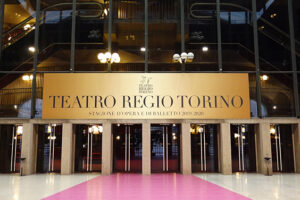
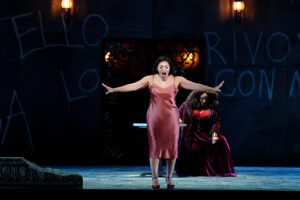

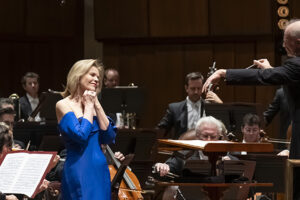

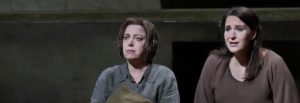




Comments